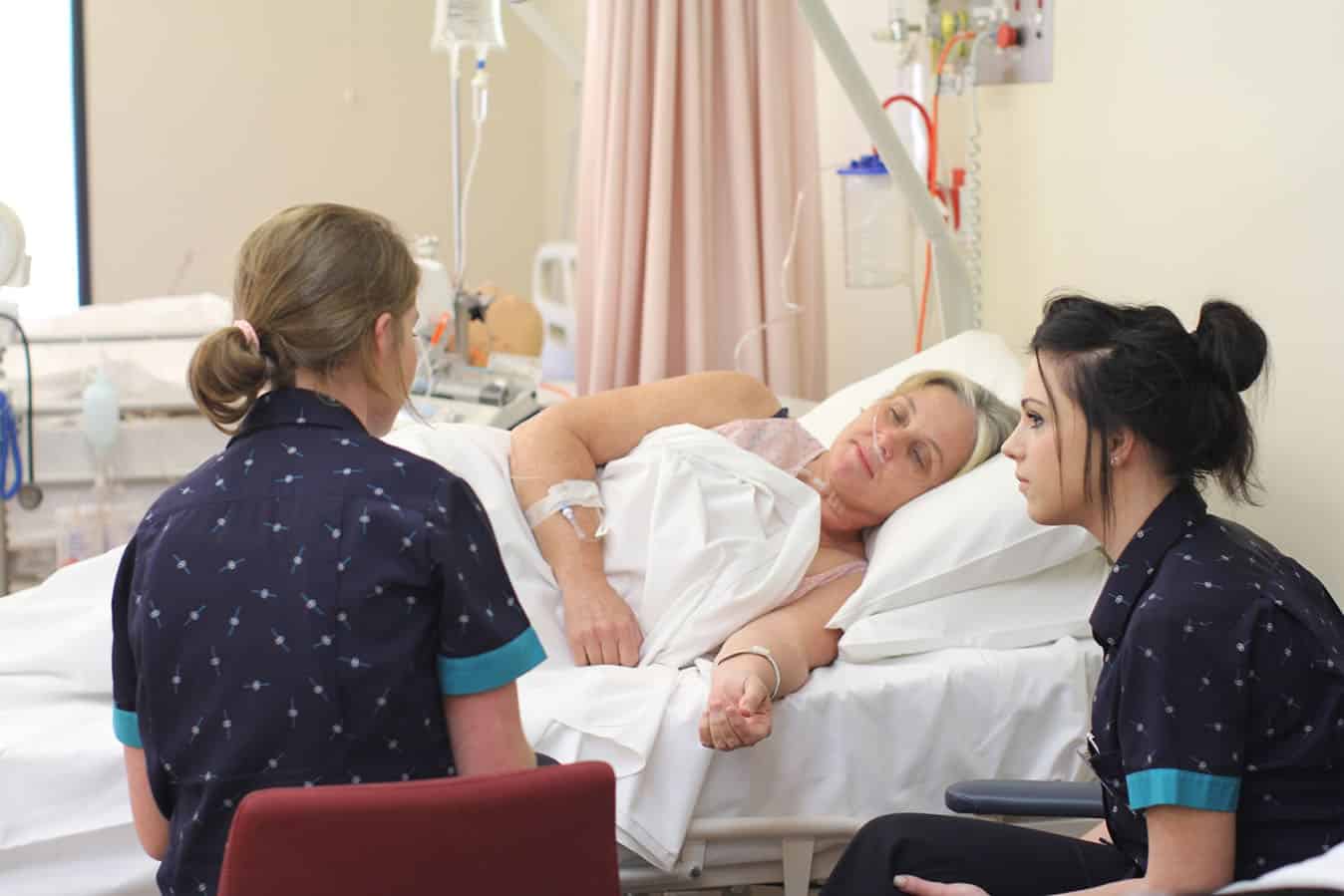An innovative simulation which uses theatre, drama and improvised acting is helping to prepare undergraduate nurses for the workforce in the context of patient safety.
CQUniversity’s Tag Team Patient Safety Simulation (TTPSS) has been developed to help students focus on patient safety before they graduate.
“TTPSS is unique as it promotes an ‘all-inclusive’ approach to student participation in simulation,” CQUniversity research project lead Professor Kerry Reid-Searl said.
The aim of tag team simulation is to ensure that both participants and observers have active and integral roles in the simulation. It creates an immersive experience for all learners, Professor Reid-Searl said.
“It is a creative approach which is designed to foster engagement and promote active inclusion of all learners in the simulation. It is also immersive with learners with both the cast and the audience members taking shared responsibility for the actions and outcomes of the simulation.”
Learners participate in a play which incorporates a semi-structured script based on one or several National Safety Quality Health Service (NSQHS) standards. The plot is guided by an educator/director with an actor who plays the role of the patient, cast and student audience. Both the cast and audience respond to predetermined needs of the patient by drawing on their knowledge and skills and improvising to dramatise the scenario.
Between the play’s two acts is an intermission which allows for reflection in which the director explores reflective discussion and key practice issues. The process allows the audience to pause and discuss the performance and suggest different actions for the actors to take.
“This means that we can have maximum number of students engaged in a scenario at any one time of the play. We then have the other half which is the audience and they have a responsibility of being active critics of the actual play unfolding,” Professor Reid-Searl said.
During the Second Act, cast members may exchange roles or tag in and out. New cast members tagged in can reframe a scene and offer an alternative approach or intervention to the scenario. Debriefing and reflective learning strategies is followed with the Final Act.
TTPSS helped graduates to be prepared to deal with difficult and sometimes confronting situations that may impact on patient safety, Professor Reid-Searl said.
“It’s about having an understanding of clinical errors that occur in industry. We know that our learners are often exposed to incidents that occur out there in the real world and by mimicking episodes that can occur for students in these simulations we aim to correct issues for them and potentially build resilience.”
TTPSS enabled students to develop skills required to be work-ready on graduation, such as the ability to work effectively as a member of an inter-professional team, communication skills, resilience and clinical reasoning skills.
Although TTPSS had been designed for undergraduate nursing students, the approach could be easily transferred to other health disciplines, Professor Reid-Searl said.
“The TTPSS approach actively engages large groups of students, is not confined to a specialised laboratory space and can potentially occur in any environment.”








